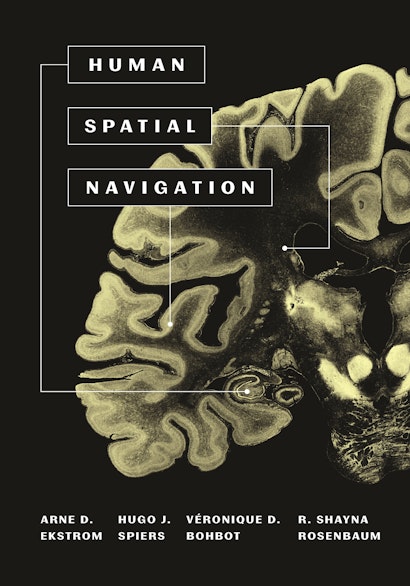Humans possess a range of navigation and orientation abilities, from the ordinary to the extraordinary. All of us must move from one location to the next, following habitual routes and avoiding getting lost. While there is more to learn about how the brain underlies our ability to navigate, neuroscience and psychology have begun to converge on some important answers. In Human Spatial Navigation, four leading experts tackle fundamental and unique issues to produce the first book-length investigation into this subject.
Opening with the vivid story of Puluwat sailors who navigate in the open ocean with no mechanical aids, the authors begin by dissecting the behavioral basis of human spatial navigation. They then focus on its neural basis, describing neural recordings, brain imaging experiments, and patient studies. Recent advances give unprecedented insights into what is known about the cognitive map and the neural systems that facilitate navigation. The authors discuss how aging and diseases can impede navigation, and they introduce cutting-edge network models that show how the brain can act as a highly integrated system underlying spatial navigation. Throughout, the authors touch on fascinating examples of able navigators, from the Inuit of northern Canada to London taxi drivers, and they provide a critical lens into previous navigation research, which has primarily focused on other species, such as rodents.
An ideal book for students and researchers seeking an accessible introduction to this important topic, Human Spatial Navigation offers a rich look into spatial memory and the neuroscientific foundations for how we make our way in the world.
Arne D. Ekstrom is associate professor of psychology at the University of Arizona. Hugo J. Spiers is associate professor of neuroscience at University College London. Véronique D. Bohbot is associate professor of psychiatry at McGill University. R. Shayna Rosenbaum is professor of psychology at York University.
"This stimulating book should intrigue readers."—Nora Newcombe, Current Biology
"In this book, four outstanding researchers present a synthesis of what is currently known about human spatial navigation. A must-read for anyone interested in the brain and cognition in general, and spatial cognition in particular."—Lynn Nadel, University of Arizona
"Human Spatial Navigation gives newcomers a clear and engaging introduction to an exciting and burgeoning research area. Necessarily selective, this book will whet readers’ tastes to learn more about a rich and important topic—how navigation works and how it goes awry."—Nora S. Newcombe, Temple University
"Synthesizing a large body of animal and human studies, this book provides a much-needed overview of the neural and behavioral mechanisms underlying spatial navigation. It also describes the clinical literature in this field and shows the links between memory and navigation. The very first textbook on human spatial navigation, it will be invaluable to undergraduate students and researchers."—Thomas Wolbers, German Center for Neurodegenerative Diseases
“Where are you? Are you wandering around a bookstore? Can you give me directions to it or find it on a map? Drawing on a wide range of studies, this internationally recognized group of neuroscientists provides us with a comprehensive and fascinating account of the cognitive and neural mechanisms necessary to address questions of human navigation.”—Chantal E. Stern, director of the Cognitive Neuroimaging Center, Boston University
“Almost everything you want to know about human navigation, from behavior to its neural basis, can be found in this readable book. Written by four renowned researchers, Human Spatial Navigation will appeal to specialists and general readers interested in the latest advances of a field that recently was celebrated by a Nobel Prize.”—Morris Moscovitch, University of Toronto

